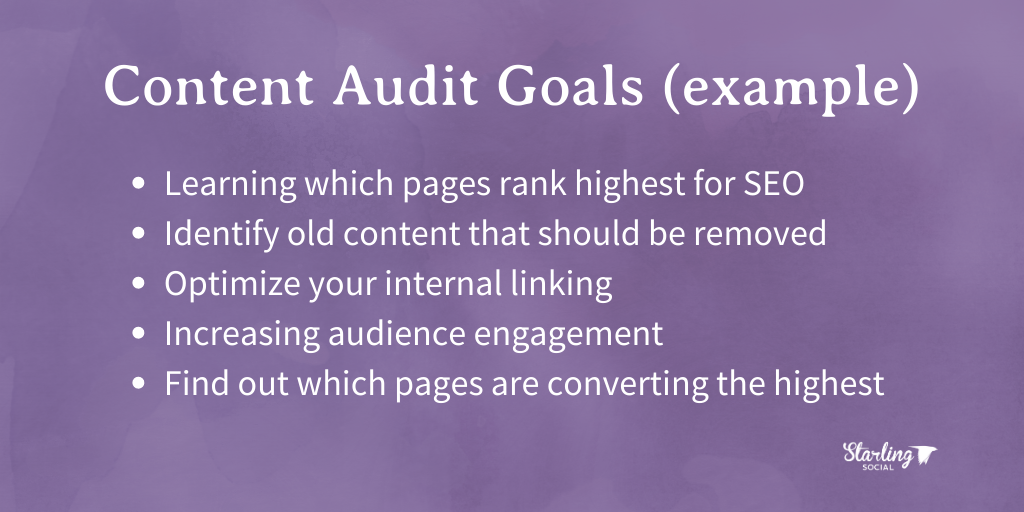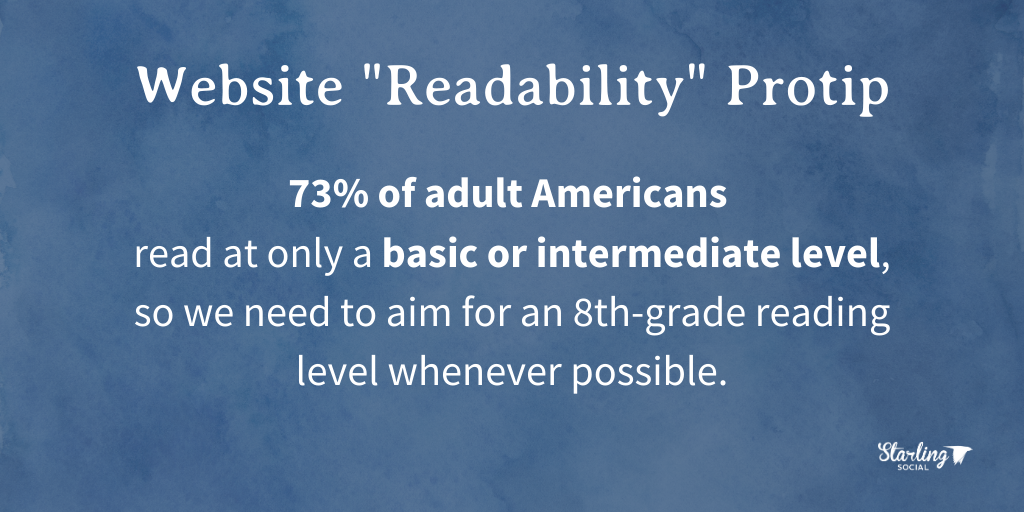5 Metrics You MUST Include In Your Next Content Audit

Do you know how well your content is helping you achieve your business goals?
Most businesses focus on creating content, which can be time-consuming and stressful all on its own.
But if you don’t know what’s working and what needs improving, you risk putting your effort into content that isn’t making a positive impact.
That’s why regular reporting and content audits should be a cornerstone of your content marketing process!
What’s a Content Audit?
A content audit systematically analyzes and reviews a portion of your content marketing strategy. For this post, we’re going to focus on website content audits, which include:
- Reviewing all landing pages
- Blog posts
- Educational and/or lead-generating content
The goal is to identify weaknesses in your content strategy and workflow, and adapting them to changing market and business goals.
What’s Does a Content Audit Do?
Content audits help you decide which aspects of your website are working and which aren’t based on your goals and key performance indicators (KPIs).
Content audits are how you identify underperforming website content that needs to be fixed, updated, or avoided in the future. Some examples include:
- Outdated information that should be removed or updated
- Links that don’t work
- Errors, typos, and other grammatical issues
- Missing words or metatags that can impact your SEO rank
- Content gaps you can fill with more content
How to Do a Content Audit: Getting Organized
Before we jump into the metrics you should cover, let’s review what you need to do to prepare to do a content audit:
Define Your Goals and Metrics
Content audits take time, so you’ll want to start with well-defined objectives. Some examples include:
- Learning which pages rank highest for SEO
- Identify old content that should be removed
- Optimize your internal linking
- Increasing audience engagement
- Find out which pages are converting the highest

Decide What Content You’ll Review
Most website content audits include a review of landing pages, blog posts, product descriptions, educational material, and product descriptions.
If you have, you can also assess other types of content like embedded videos, PDFs and other gated content, and interactive content like tests, quizzes, and games.
This process can be time-consuming, so we recommend using a tool like SEMRush Content Audit or Screaming Frog (which we use here at Starling) to gather your URLs in one place.
Now that you’ve gathered your data, it’s time to look at the top five metrics you want to pay the most attention to:
The 5 Most Important Content Audit Metrics
1. Page Load Time
Search engines use page speed as one of their top ranking metrics because a fast site provides a better user experience. If your page loads quickly, that page is more likely to earn a higher spot on a Search Engine Results Page (SERP).
A quickly-loading page helps with SERP rankings and provides a better user experience. A mere one-second delay in page loading makes page views drop by 11% and causes customer satisfaction to drop by 16%.
If you aren’t using a 3rd party tool, we suggest using Google’s speed checker from their Google Developers toolkit to assess page speeds manually.
Note: you can currently also do this in Google Analytics by navigating to behavior> site speed > page timings, but with the new G4 rollout coming in July of 2023, we’re trying to avoid advocating for specific steps behind-the-scenes too much right now.
2. Readability
73% of adult Americans read at only a basic or intermediate level, so we need to aim for an 8th-grade reading level whenever possible.
Not only does writing simply help people understand your site’s content, but Google’s web crawlers don’t struggle to understand the text’s meaning and links.
If the meaning is unclear, your page won’t rank well. If your audience doesn’t understand, they’ll click away. Both of these actions increase your bounce rate and hurt your SEO.
The Hemingway editor is our favourite tool for keeping our writing clear and concise. It helps us keep our sentences short and to the point.

3. Backlinks
A “backlink” is when another site links to yours. Search engines like Google see a backlink as one website saying to another: “I find this content valuable, so I’m going to link to it.”
You’ll need to use a 3rd party tool like Screaming Frog, Moz, Semrush, or Ahrefs for this part.
You can also “boost” underperforming content by linking to it from other pages on your site, known as “internal linking.” This helps users discover pages that they may not have otherwise.
4. Bounce Rate
A “bounce” happens when someone arrives on a page and then leaves without doing anything (clicking a button, navigating to another page, etc.)
If you have a high bounce rate, it could be a sign that the content isn’t serving its intended goal.
Ideally, your content acts as a gateway that leads users from a search to your site, informs or entertains them, and encourages them to consume more content or convert.
When someone spends a lot of time on a page, it’s called “sticky” content that keeps users interested enough to explore the rest of your site.
What’s a good bounce rate? Generally speaking, depending on your industry, 26% to 40% is good.
5. Organic Traffic
Ideally, most of your traffic should come from “organic” (unpaid) sources, like people searching on sites like Google and through backlinks to other websites.
If you’re not getting a lot of organic traffic, that could mean that there’s an issue with the following:
- Your content strategy
- How you’re sharing your content
- The content topic
- What you’re writing/the content itself
Bonus: Other Content Audit Metrics to Look For
We’ve just listed a handful of important metrics to pay attention to, but there are several others to look for, including:
- Time on Page. This metric tells you whether the content you’re publishing is suitable for your audience. If this metric is high, then that’s a sign to publish more content like it.
- Unique Visitors. The more unique people visit your site, the higher the likelihood that some of those people will engage with your content, link back to it, or convert.
- Pages Per Session. Measures how many pages someone looks at after they’ve finished looking at the content on the first page they see.
- Traffic Sources. Where are your visitors coming from? Look for social media sources, emails, other websites, and organic searches.
- New vs. Returning Users. Returning users are great, but we need to keep attracting new people to our site to gain new customers.
- Conversions. We didn’t include this in the top 5 because not every piece of content is intended to convert. Many exist just to educate, inform, or inspire), but make sure to pay attention to your website conversions and their sources (a landing page, email newsletter, etc.), so you can create more content to encourage that action.
Start Publishing Better Content Today
Doing a content audit gives you valuable insight and data that you can use to know if your content marketing plan is moving in the right direction or if you need to pivot somewhere.
When you see content doing well, note its details, including the topic, when it was published, and if it was timely or evergreen.
Then, work to repeat your success based on what you’ve learned.
For content that’s underperforming, take note of those metrics and work to avoid them in the future.
If you’re looking for help writing content for your website, blogs, and email newsletters, drop us a line! We’re an agency founded on rhetoric and +22 years’ experience publishing content online, and we’d love to help.

